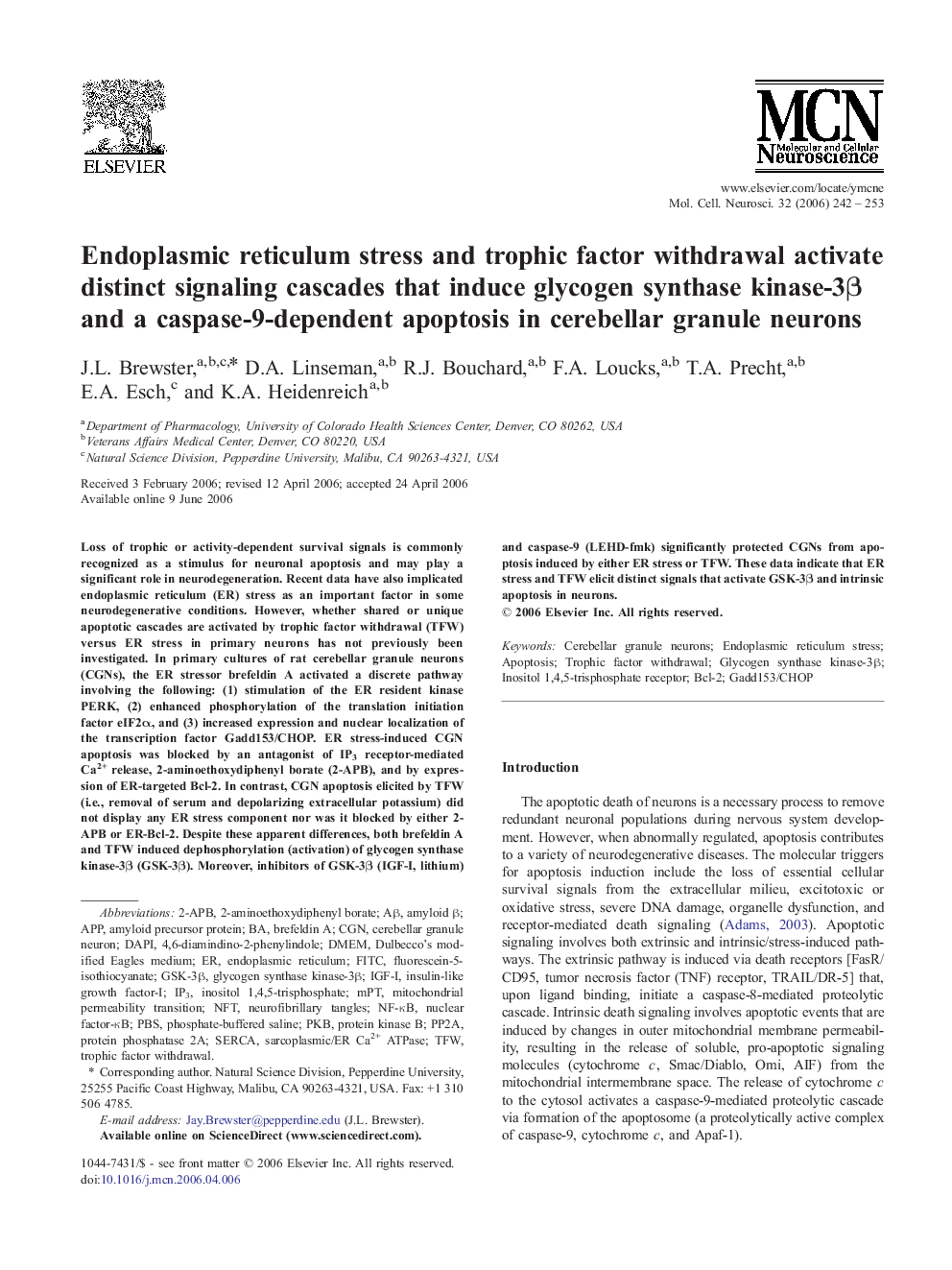| Article ID | Journal | Published Year | Pages | File Type |
|---|---|---|---|---|
| 2199272 | Molecular and Cellular Neuroscience | 2006 | 12 Pages |
Loss of trophic or activity-dependent survival signals is commonly recognized as a stimulus for neuronal apoptosis and may play a significant role in neurodegeneration. Recent data have also implicated endoplasmic reticulum (ER) stress as an important factor in some neurodegenerative conditions. However, whether shared or unique apoptotic cascades are activated by trophic factor withdrawal (TFW) versus ER stress in primary neurons has not previously been investigated. In primary cultures of rat cerebellar granule neurons (CGNs), the ER stressor brefeldin A activated a discrete pathway involving the following: (1) stimulation of the ER resident kinase PERK, (2) enhanced phosphorylation of the translation initiation factor eIF2α, and (3) increased expression and nuclear localization of the transcription factor Gadd153/CHOP. ER stress-induced CGN apoptosis was blocked by an antagonist of IP3 receptor-mediated Ca2+ release, 2-aminoethoxydiphenyl borate (2-APB), and by expression of ER-targeted Bcl-2. In contrast, CGN apoptosis elicited by TFW (i.e., removal of serum and depolarizing extracellular potassium) did not display any ER stress component nor was it blocked by either 2-APB or ER-Bcl-2. Despite these apparent differences, both brefeldin A and TFW induced dephosphorylation (activation) of glycogen synthase kinase-3β (GSK-3β). Moreover, inhibitors of GSK-3β (IGF-I, lithium) and caspase-9 (LEHD-fmk) significantly protected CGNs from apoptosis induced by either ER stress or TFW. These data indicate that ER stress and TFW elicit distinct signals that activate GSK-3β and intrinsic apoptosis in neurons.
